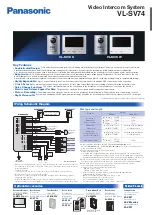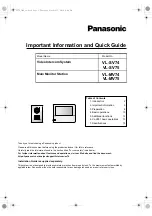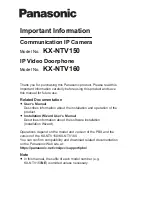
2
•
The red LED will blink quickly 3 or 4 times and then go off.
•
If you put another battery in the slot, you get the same symptoms.
FIX: Unplug the charger for a short time; then plug it back in. The problem will go away. If the problem
comes back, send it into 3M Repair Center. In normal operation, the red LED blinks 5 or 6 times then
stays red until charging is complete.
Tips and Tricks
•
When troubleshooting intercom audio problems, it is a good idea to have a spare 8-Ohm speaker
available. You can quickly connect it to the output of most intercoms. This reduces the need to send
someone outside to listen for audio. A 3.5-inch speaker will also serve as a microphone for checking
inbound audio. This is the same speaker used in many 3M intercoms and accessories. Use 3M
speaker, 3.5-inch, waterproof, 78-8028-9179-2.
•
Certain
Wireless Base Stations
may exhibit some level of microphonics, which is normal.
Microphonics occurs when a mechanical vibration of the base station is heard in the
headsets/beltpacks. Any vibration in the crystal or transmitter section of the base station will cause
frequency shifts that will be demodulated in the headset. Some units could be more susceptible to the
problem than others. If the crystal is suspended above the PCB, its case may vibrate when shocked.
If the transmitter shield (metal can) is loosely soldered, it can cause microphonics. Mounting the base
station on a Sorbothane pad may help. Here is a link to their website: www.sorbothane.com. If the
base station is an older one (C762AA) with the monopole wire transmit antenna, taking the cover off
and placing a piece of the Sorbothane on the tip of the antenna may help. Just make sure that the tip
of the antenna is loaded against the housing so it can't vibrate freely.
•
Talk Lock
mode is one of the best features of the 3M Wireless Intercom System. Unfortunately, it can cause
problems if not used correctly. If a headset operator presses Talk Lock, all other headset microphones will be
disabled. Talk Lock should be disabled at McDonalds and at any location where it is not thoroughly
understood. Talk-Lock is enabled on all new and repaired headsets/beltpacks. Even though the installing
technician initially disabled Talk-Lock on all headsets, if one headset is sent in for repair, it will be returned
with Talk-Lock enabled. Talk Lock is normally not available on C762AA base stations.
Talk-Lock is a toggle function that must be checked first to see if it is enabled or disabled. If the Talk LED on
the base station lights when the L button is pressed, Talk-Lock is enabled.
To disable Talk-Lock, turn the headset OFF, press and hold the L button while pressing ON for 5 seconds. You
will hear a series of beeps indicating the headset has been programmed.
Recheck the Talk-Lock function by pressing the L button. The Talk LED on the base station should not light.
The LED indicator on C1060 headsets will light red when Talk/Lock is used.
•
An alternate use for the
C960 Day/Night Switch
is to re-label it on the base station. Re-label “Night”
to “Hearing Impaired” and adjust the night volume higher. If the base station is located near the
order-taker, a flip of the Day/Night switch may make communication clearer. Don’t forget to switch
back to “Day” when finished.
•
In
Dual-Lane
and
Cross-Lane
installations, occasionally, when T1 is pressed the customer at the
Lane 2 menu sign will hear the conversation. A greater degree of frequency separation can be
achieved by separating the two base stations by 20 feet. Additional separation can be gained by
mounting both base stations some distance away from any headsets, such as on an inside wall.
Revised “Cross Lane System Installation” instructions are included with this bulletin.
Summary of Contents for C860
Page 55: ...3 Figure 3 2 ...
Page 59: ...3 Figure 3 2 ...
















































